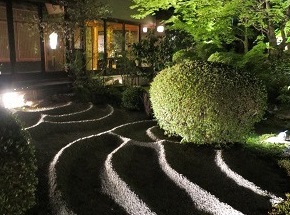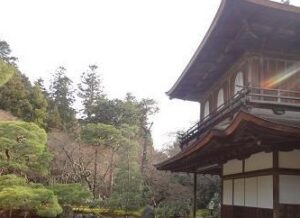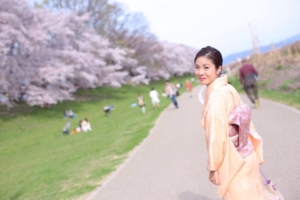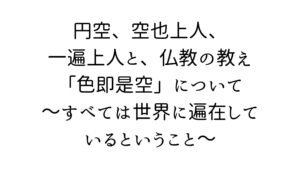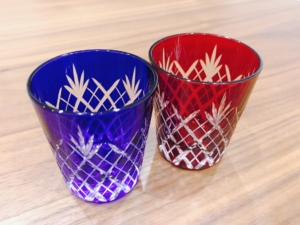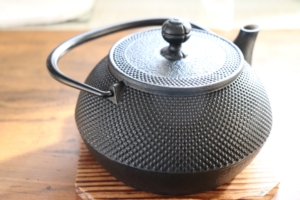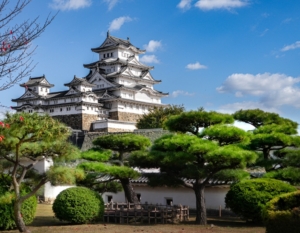枯山水とは、水を使わない庭園のことで、岩、石、砂などを使用し、山や海などの雄大な自然風景を表現します。
Karesansui is a garden without water, using rocks, stones, and sand to express magnificent natural scenery such as mountains and the sea.
magnificent:雄大な
scenery :風景、景色
鎌倉時代、中国から禅宗が日本に伝えられると同時に、枯山水も広まりました。
In the Kamakura period, Zen Buddhism was introduced to Japan from China, and at the same time, karesansui spread.
枯山水は、禅宗の教えを反映していると考えられています。
Karesansui is thought to reflect the teachings of Zen Buddhism.
reflect:反映する

鎌倉時代から室町時代にかけて活躍した有名な庭師に、夢窓疎石がいます。
A famous gardener who was active from the Kamakura to Muromachi periods was Muso Soseki.
その後枯山水は、日本人の侘び寂びの感覚に寄り添い、禅寺のみならず、武家や町人へも広がっていきました。
Later on, karesansui became more in tune with the Japanese sense of wabi-sabi and spread not only to Zen temples but also to samurai and townspeople.
in tune with:~と調和して
枯山水の石は、不老不死の仙人が住む島や、滝を昇る鯉を表したりすることもあります。
Karesansui stones are sometimes used to represent an island inhabited by immortal hermits or a carp ascending a waterfall.
represent:代表する、表わす
inhabit:住む
hermit:隠遁者
ascend:昇る
執筆者:山本和華子
【本を出版しました】
